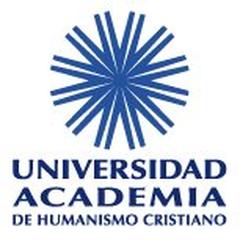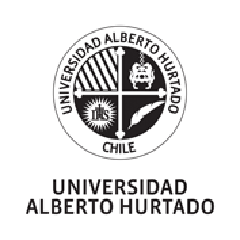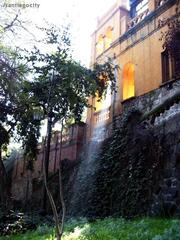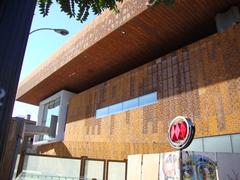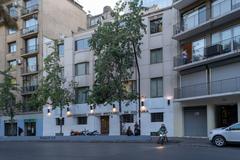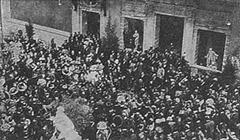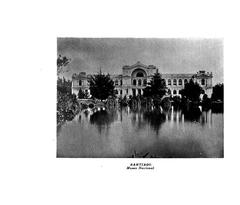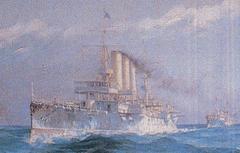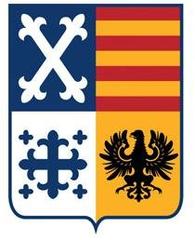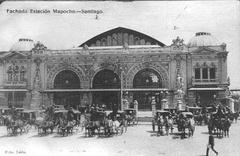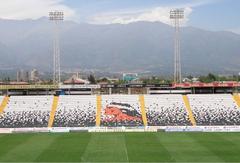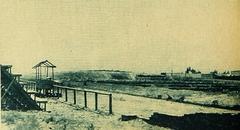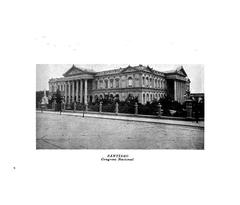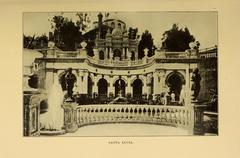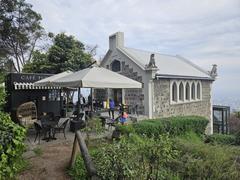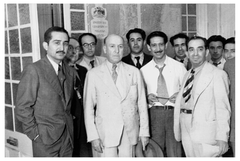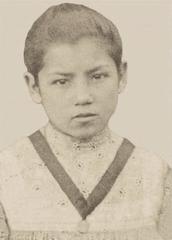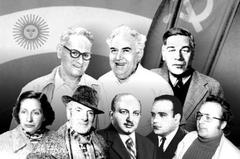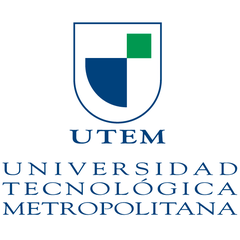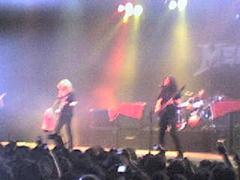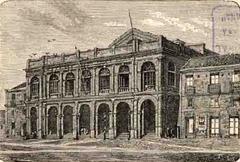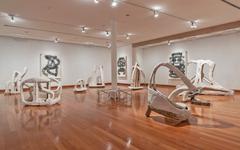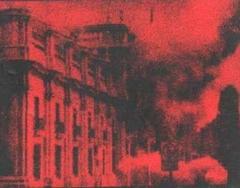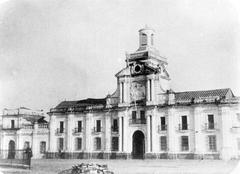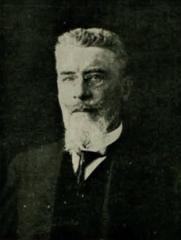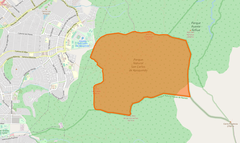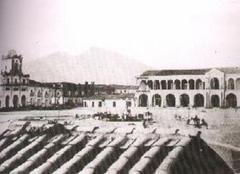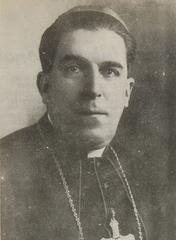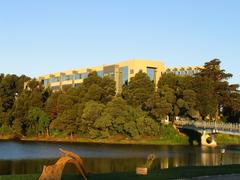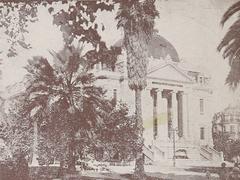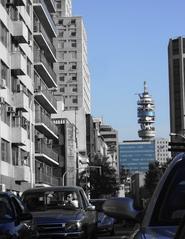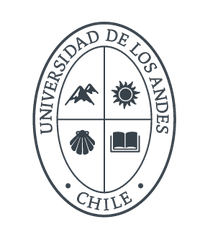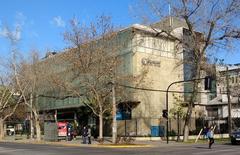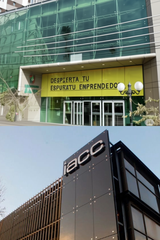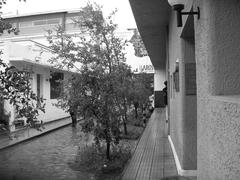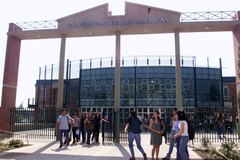
Palace of the Royal Consulate Court of Santiago: Visiting Hours, Tickets, and Historical Significance
Date: 04/07/2025
Introduction
The Palace of the Royal Consulate Court of Santiago—historically known as the Palacio de la Real Audiencia—stands as a monumental emblem in the heart of Santiago, Chile. This neoclassical masterpiece encapsulates the nation’s colonial heritage, its journey toward independence, and its enduring civic identity. Today, the palace houses the National History Museum of Chile, offering visitors an immersive experience into the country’s complex political, social, and cultural history (Wikipedia, whichmuseum.com).
This comprehensive guide provides detailed insights into the palace’s historical significance, architectural features, preservation efforts, visiting hours, ticketing, accessibility, and tips for making the most of your visit to one of Santiago’s most treasured landmarks (VisitChile.com).
Table of Contents
- Historical Background and Significance
- Architectural Heritage and Urban Context
- Preservation and Community Engagement
- Visitor Information (Hours, Tickets, Accessibility)
- Guided Tours and Museum Experience
- Nearby Attractions and Travel Tips
- Frequently Asked Questions (FAQ)
- Visual Resources and Media
- Conclusion
- References and Further Reading
Historical Background and Significance
Origins and Colonial Governance
Constructed between 1804 and 1808 under architect Juan José de Goycolea y Zañartu, the palace originally served as the seat of the Royal Audiencia of Santiago, the highest Spanish colonial court in the region. Its location on the north-central side of the Plaza de Armas was a deliberate symbol of Spanish authority and judicial power in the Kingdom of Chile (Wikipedia).
Role in Independence and Early Republic
The palace played a pivotal role in Chile’s independence movement. It hosted the First National Congress in 1811, marking the beginning of Chilean republicanism. During the Patria Vieja period, it served as the government house and the office of President Bernardo O’Higgins. The palace continued to be the seat of government until 1846, before those functions moved to La Moneda Palace (Nomadic Niko).
Architectural Heritage and Urban Context
Neoclassical Design
The palace epitomizes neoclassical architecture, with symmetrical façades, grand columns, and a central courtyard. Its balanced proportions and restrained ornamentation reflect Enlightenment ideals of order, rationality, and civic virtue. The use of local stone, brick, and stucco demonstrates the adaptation of European styles to Chilean materials and conditions (VisitChile.com).
Symbolism and Civic Identity
The monumental scale and dignified design of the palace projected authority and stability during times of political transition. Its position among other major landmarks on Plaza de Armas—such as the Metropolitan Cathedral—reinforces its role as a centerpiece of Santiago’s urban and civic life.
Preservation and Community Engagement
Restoration and Conservation
Declared a National Monument in 1969, the palace has undergone significant restoration to reinforce its structure against earthquakes, conserve original materials, and adapt spaces for museum use. Restoration projects emphasize sustainability, the use of traditional techniques, and the respectful integration of modern amenities (Irkhome.com).
Community Programs
The museum engages the local community through educational programs, guided tours, workshops, and public events. These initiatives foster pride, social cohesion, and broaden the palace’s impact as a living monument and cultural hub.
Visitor Information
Location
- Address: Plaza de Armas 951, Santiago, Chile
Visiting Hours
- Tuesday to Sunday: 10:00 AM – 5:00 PM
- Closed: Mondays and public holidays
- Always confirm current hours on the museum’s official website before your visit.
Tickets
- General Admission: Free
- Special Exhibitions: Some may charge a small fee
- Group Tours: Advance booking recommended for groups
Accessibility
- Wheelchair accessible entrances, ramps, and elevators
- Accessible restrooms
- Staff assistance available upon request
Guided Tours and Museum Experience
Guided Tours
- Availability: On request; check with the museum for schedules and language options
- Content: In-depth exploration of the main hall, courtrooms, and the central courtyard
- Virtual Tours: Online exhibits and virtual tours are available on the museum’s digital platforms
Museum Highlights
- Permanent Exhibitions: Trace Chilean history from pre-Columbian times through the colonial period, independence, and modern era
- Collections: Colonial furniture, paintings, official documents, clothing, and daily life artifacts
- Multilingual Labels: Exhibits in Spanish and English
- Interactive Displays: Multimedia presentations for all ages
Photography
- Photography is allowed without flash in most public areas; restrictions may apply to select exhibits
Nearby Attractions and Travel Tips
Top Sights Within Walking Distance
- Metropolitan Cathedral of Santiago: Adjacent, featuring ornate interiors
- Museo Chileno de Arte Precolombino: Renowned pre-Columbian art collection
- Central Post Office Building: French Renaissance-inspired architecture
- La Moneda Palace: Chile’s presidential palace, a few blocks away
- Santa Lucía Hill: Scenic park with panoramic city views
- Barrio Lastarria: Artistic neighborhood with galleries and cafés
Dining and Amenities
- Cafés, bakeries, and restaurants surround Plaza de Armas
- Gift shop on-site with books and local souvenirs
Travel Tips
- Public Transport: Plaza de Armas Metro station is nearby
- Safety: Area is generally safe, but remain vigilant for pickpockets
- Best Time to Visit: Weekday mornings are less crowded
- Weather: Mediterranean climate; dress appropriately for season
Frequently Asked Questions (FAQ)
Q: What are the visiting hours for the palace?
A: Tuesday to Sunday, 10:00 AM to 5:00 PM. Closed Mondays and public holidays (whichmuseum.com).
Q: Is admission free?
A: Yes, general admission is free. Some special exhibitions may have a fee.
Q: Are guided tours available?
A: Yes, they are available on request; it’s recommended to book in advance for groups.
Q: Is the palace accessible for visitors with disabilities?
A: Yes, most areas are wheelchair accessible, with ongoing improvements to enhance accessibility.
Q: Is photography permitted?
A: Non-flash photography is generally allowed except in restricted areas.
Q: How do I get there by public transport?
A: The Plaza de Armas Metro station is the closest stop, just a short walk from the palace.
Visual Resources and Media
- Exterior and interior images of the palace, with alt tags for accessibility:
- “Palace of the Royal Consulate Court of Santiago façade”
- “Interior courtroom at Palacio de la Real Audiencia de Santiago”
- “Plaza de Armas Santiago historical square”
- Virtual tours and interactive maps are available via the museum’s official website.
Conclusion
The Palace of the Royal Consulate Court of Santiago is a cornerstone of Chile’s historical and cultural landscape. Its neoclassical architecture, pivotal role in governance and independence, and transformation into the National History Museum make it an essential destination for visitors seeking to understand Chile’s past and present. With free admission, engaging museum exhibits, and proximity to other key attractions, the palace offers an enriching and accessible experience for all.
For up-to-date information, special events, and exclusive content, download the Audiala app and follow our social media channels.

